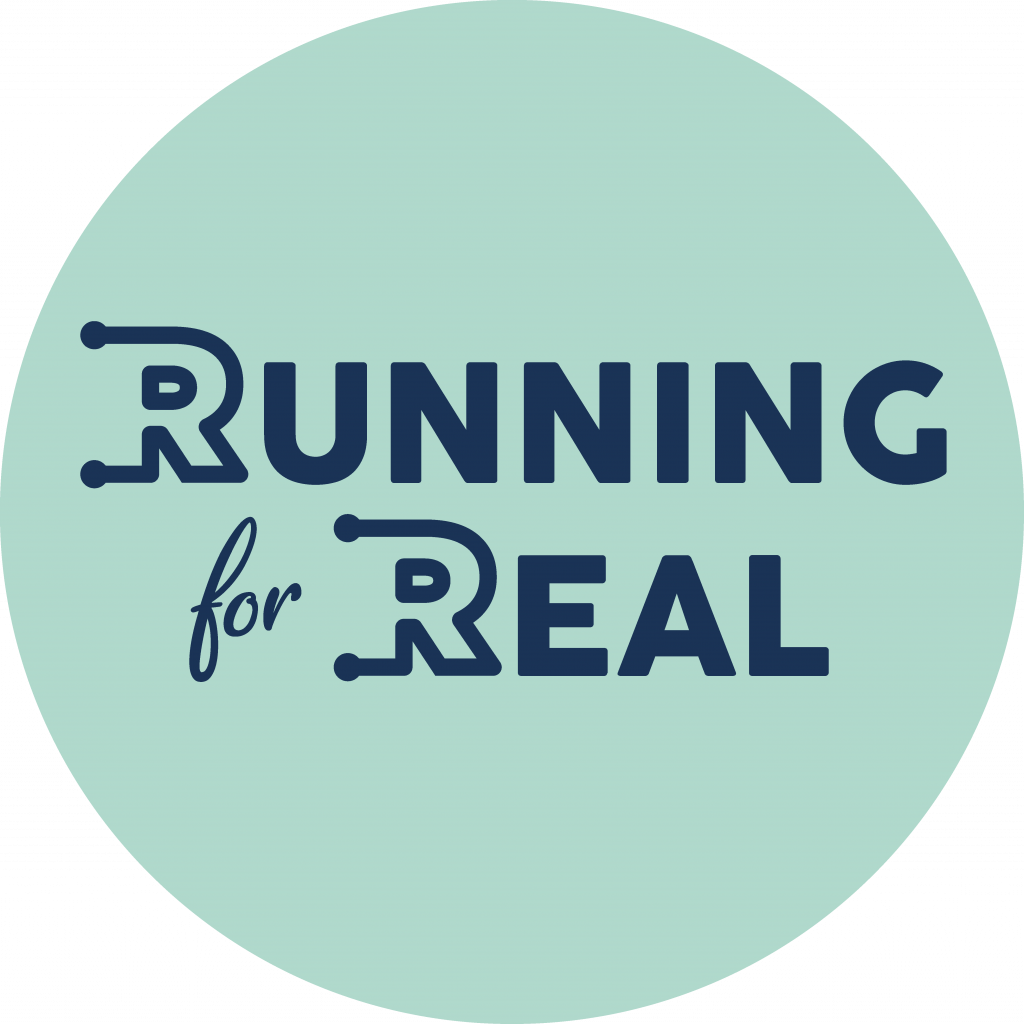Brian Reynolds’ story is a testament to his unyielding spirit. His relentless determination has made him one of the fastest double amputee runners in the world, setting records in distances from the 5K to the marathon. As soon as he’s achieved one goal, he’s on to the next, which brought him to the Leadville 100 last weekend.
His approach to each new challenge is the same. “Everything that I’ve done in the past ten years has started by just taking one step,” he says. “The obstacle looked like a mountain ahead of me, but one step is what brought me to where I am today. So any obstacles in your life can be conquered by just taking the first step.”
Listen to the Running for Real podcast here:
Apple (iTunes) Podcast | Sticher | Castbox | Overcast | Spotify | Google Play | iHeartradio |
Brian has faced obstacles his entire life. He was born with an autoimmune disorder that made him susceptible to getting sick. So when he contracted meningococcemia, a rare form of bacterial meningitis, at the age of four, it didn’t set off any alarm bells to his parents. “It’s hard to tell when somebody has meningococcemia; it presents very much like the flu,” he explains. “You just don’t feel good. You have a high fever and one of the most commonly associated phrases with this illness is ‘Healthy at breakfast and dead by dinner’ because if you don’t catch it soon enough, there’s just no stopping it. It just completely wrecks the body.
“I remember getting up and I had, at that point, still a lower grade fever, like 100 or 101 or something. And because I was sick all the time, my parents sent me to school. I was in preschool at that point, so there were half days, and by the time I got home from school, it was apparent that I was feeling much worse than when I went to school.
“One of the classic signs of meningococcemia, although it doesn’t happen to everyone, is a purple rash or dots on your chest. And I was lucky my dad happened to be holding me and he saw right above the line of my shirt a little purple mark. And when they looked and saw my chest was covered in them, that’s when they realized this is not just a you-having-a-fever type deal, there’s something much bigger going on here. And they rushed me to Boston Children’s Hospital, where at that point, my fever was over 106. We happened to be super lucky that the doctor had just come off a meningitis rotation and knew all of the signs and symptoms and was able to start treatment immediately. If they hadn’t run into him or if they hadn’t seen my purple rash, we probably wouldn’t be having this conversation today.”
When he woke from a medically-induced coma, he discovered that he had lost both legs below the knee.
Brian quickly realized that he could use being an amputee to get out of doing things that he didn’t want to do. “I was enabled to not do stuff that might have been hard and I think that was far more of an issue than being told not to do something. Being told not to do something means that I generally just went and did it anyway, but I think the attitude of ‘I don’t have to do something because I’m an amputee’ was more of a damaging effect over time.”
His mindset changed after college, when he saw a poster for Team in Training, advertising a hike in the Grand Canyon. “At that point in time, if you put a million dollars at the end of a mile, I wouldn’t have been able to get to it,” Brian says. “I had zero cardio ability at all. I was fit; I was into powerlifting, so I was at the gym every single day. It’s not like I was sitting around or anything, but my cardio ability was absolutely zero.
“I had spent my entire life avoiding any sort of walking, let alone running or cardio of any sort. So I had zero leg muscle built up for that kind of event. I saw that poster and I signed up without a second thought. My mom was like, ‘You can’t even walk to the center of town, which is half a mile away. Why do you think it’s a good idea to go hike the canyon?’ I don’t know; sounds like fun though. And I spent three or four months training with the local Massachusetts group and went to the Grand Canyon and did a 15 mile hike through the canyon.”
At that point, it was the hardest thing he had ever done. “I climbed out of the canyon and just lay on the trail at the top of it. I was like, ‘I’m never doing this again’ and promptly signed up for the next Team in Training event within 12 hours. It has been a landslide like that ever since, every single year trying to figure out what I can do to push myself further, redefine what I think is possible for me and we’re into somewhere around 11 or 12 years of that.”
Hiking changed Brian’s life in another way. “When I was on those Team in Training hikes, I met my wife. I met her on top of Angels Landing in Zion National Park. And if I hadn’t said, ‘Screw this’ to what I thought being an amputee was, and wearing pants because I thought everybody cared and was gonna stare at me or ask annoying questions, if I hadn’t shed all that and moved on, my life would not be nearly as full and rich as it is today.”
Family has been key to Brian’s success as a runner. His parents and sister have always believed in him, and he describes his brother as his “ride or die.” His training would be impossible without his wife making sacrifices, looking after their three children while having a job of her own. “Without family support, it’s just not a possible endeavor,” he says.
Brian’s final event with Team in Training was the 2014 Disney marathon. “It [running a marathon] just seemed like something you should have on a bucket list,” he says. “So I ran the marathon. It was terrible because I had only ever run three miles and it was like, ‘Great. I’ve done that; I don’t have to run anymore” and I put my [running] legs away in the closet. And then in 2016, me and a few of my lifting friends were at the gym and everybody was on the treadmill, seeing how fast they could run. And I ran like a 4:48 mile on the treadmill. And I was like, ‘Huh, maybe I should try running.’
He spent the next few months training with a plan he designed himself and knocked 63 minutes off his Disney time at the Houston marathon. Motivated by that result, he got a coach, started training seriously, and embarked on his racing career, breaking records all along the way. What was the next logical step? Running 100 miles on a highly technical course, obviously.
“The reason that Leadville really drew me was that the community was so into the race and was so kind and inviting. But also, it’s a race that goes through just some of the most beautiful mountains and landscapes that you could possibly ever see. And having been in Leadville the past couple of years and not only seeing a lot of the landscape, but also getting to see people racing through it and all of the emotions they went through, whether it be from how tough the race was, or how hard things were getting for them personally, it just seemed like a race that I really wanted to be a part of.”
Despite having seen others struggle, Leadville proved to be even harder than Brian had anticipated. Not having lower legs means that he’s missing major muscle groups. He doesn’t have ankles or calves to help propel him forward, so his hips do all of the work. His feet don’t move, so he can’t flex an ankle to get free of obstacles on the trail. “During this race, my foot getting stuck in a root or a rock or a little ditch in the dirt meant that my leg got ripped off 22 times,” he says. “And if that doesn’t sound incredibly painful, I can tell you that it is.
“So on top of having less muscle groups to work with, not having a movable ankle when you’re on trails just was, for me, absolutely terrible. Not only are the obstacles such as roots and rocks and dips in the terrain a problem, but going downhill at any sort of speed is almost impossible without having that heel-to-toe motion to help slow me down, going down steep slopes. It means that I basically have to sidestep down at a snail’s pace or I run headlong down and risk taking a really bad fall. But there’s no way for me to effectively slow myself down or get down a steep or technical pitch in any sort of safe manner.”
By the Outward Bound aid station, at mile 23.5, he was in pain and fairly certain that he wouldn’t complete the stages fast enough to avoid the cutoff times. Still, he persisted. He made the Twin Lakes aid station, at 37.9 miles, with six minutes to spare. Ascending Hope Pass’s 3,200 feet of elevation gain over four miles, he passed 85 runners and reached the aid station with a four-minute margin. “Making it up Hopes Pass in like an hour 50 on fresh legs is difficult, doing it with 37 plus miles in my legs was not something I thought was possible,” he says. He finished his race at Winfield, the turnaround point, having completed fifty miles. “I didn’t know what those mental demons would look like and I didn’t know what the battering on my legs would feel like, so getting to Winfield in and of itself was a victory for me. I’m not saying that there’s not a small kernel of disappointment that I didn’t get to at least attempt going back. But I’m truly at peace with the situation and how it played out.”
Brian entered the race with a feeling of gratitude. “That’s really what kept me going the entire day, no matter how hard it got, the gratitude that I had the ability to be there. But also the gratitude of everybody that came around me to help me get there and that was present that day, helping me. Yeah, that is truly what pushed me on throughout the entire day. Gratitude.”
Resources:
Thank you to Allbirds, Precision Fuel & Hydration, and AG1 for sponsoring this episode.

Allbirds looks at everything through a sustainability lens; it’s at the core of who they are as a company and the products they create. Their performance running shoe, the Tree Flyer, is lightweight, super springy, and wildly comfortable, and they’re Tina’s go-to running shoes. The Tree Dasher is not only a running shoe, it’s perfect for daily wear. You might also want to check out the Plant Pacers, made from plant leather.
Use this link, and you’ll get a free pair of socks! Just add them to your order, and when you use this link, it will take off the price at the end.

Precision Fuel & Hydration helps athletes crush their fueling and hydration so they can perform at their best. Tina used their electrolytes and fuel when she finished first female and third overall at the Bryce Canyon 50 Miler. You can use their free Fuel & Hydration planner to understand how much carb, fluid, and sodium you need for your key runs.
If you have more questions, Precision offers free video consultations. Their Athlete Support crew will answer your race nutrition questions and act as a sounding board for your fueling strategy. No hard-sell, just an experienced and friendly human who knows the science and is full of practical advice on how to nail your race nutrition. You can book a call here.
Once you know what you need to run your best, you can go here to get 15% off their range of multi-strength electrolytes and fuel.

AG1 is the daily Foundational Nutrition supplement that delivers comprehensive nutrients to support whole-body health.
With its science-driven formulation of vitamins, probiotics, and whole-food sourced nutrients, AG1 replaces your multivitamin, probiotic, and more in one simple, drinkable habit. And just as importantly, it actually tastes good!
If a comprehensive solution is what you need from your supplemental routine, go here and get a FREE 1-year supply of Vitamin D AND five free AG1 Travel Packs with your first order!
Thanks for listening!
If you haven’t already, be sure to subscribe on Apple, Spotify, iHeart, Stitcher, YouTube, or wherever you get your podcasts. And if you enjoy Running for Real, please leave us a review!
Keep up with what’s going on at Running for Real by signing up for our weekly newsletter.
Join the newsletter
This is not your usual email newsletter. With Tina’s personal reflections and recommendations, suggestions of things to do, thoughts to contemplate, and some updates, this newsletter is one that you’ll WANT to read, not hit “delete” as soon as you see it.
Follow Tina on Instagram, Facebook, and Twitter. You’ll find Running for Real on Instagram too!
Want to be a member of the Running for Real community? Join #Running4Real Superstars on Facebook!
Subscribe to our YouTube channel for additional content, including our RED-S: Realize. Reflect. Recover series of 50+ videos.
Thank you for your support – we appreciate each and every one of you!



